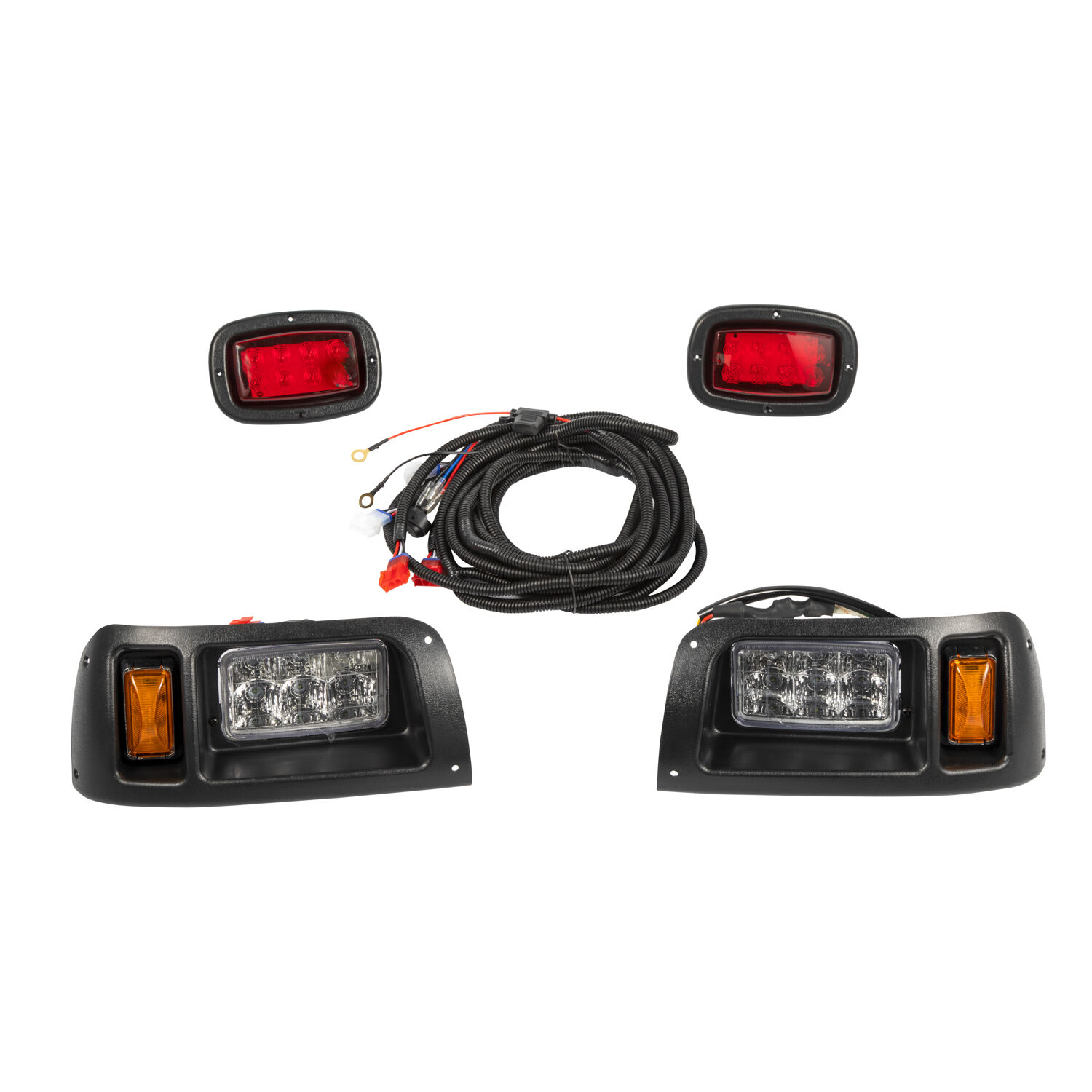Essential Guide to Golf Cart Lighting Solutions
Golf cart lights have evolved significantly from basic utility lighting to sophisticated illumination systems that enhance both safety and style. Whether you're navigating the course during twilight hours or using your cart for neighborhood transportation, proper lighting is crucial. Understanding the various types of golf cart lights available today can help you make an informed decision for your specific needs.
Modern golf cart lighting solutions combine advanced LED technology with practical design, offering unprecedented brightness and energy efficiency. From standard headlights to decorative accent lighting, the market now provides extensive options to suit every requirement and preference.
Understanding Different Golf Cart Light Technologies
LED Lighting Systems
LED lights have revolutionized golf cart illumination with their superior brightness and energy efficiency. These lights consume minimal power while providing exceptional visibility, making them ideal for extended use. LED systems typically last up to 50,000 hours, far outlasting traditional bulbs, and generate minimal heat during operation.
The versatility of LED golf cart lights allows for various color temperatures and brightness levels. Cool white LEDs offer excellent visibility for nighttime driving, while warm white options provide a more aesthetically pleasing appearance. Additionally, many LED systems come with adjustable brightness settings to accommodate different lighting conditions.
Halogen Light Options
While less common in modern applications, halogen golf cart lights still maintain a presence in the market. These lights produce a warm, natural light quality that some users prefer. Halogen bulbs offer good immediate brightness and are generally more affordable upfront compared to LED systems.
However, halogen lights consume more energy and generate significant heat during operation. They also have a shorter lifespan, typically requiring replacement after 1,000 to 2,000 hours of use. Despite these limitations, some golf cart owners choose halogen lights for their warm light quality and familiar performance.
Essential Lighting Components for Golf Carts
Headlight Configurations
Effective headlights are paramount for safe operation during low-light conditions. Modern golf cart headlight systems often feature dual-beam functionality, offering both high and low settings for different situations. High-quality headlights should provide wide-angle coverage while maintaining focused forward illumination.
Many advanced headlight systems now incorporate automatic dimming features and daylight running capabilities. These smart functions enhance safety by adjusting light output based on ambient conditions and ensuring your cart remains visible to others even during daylight hours.
Tail Light and Brake Light Systems
Proper rear lighting is crucial for safety and legal compliance when operating golf carts on public roads. Modern tail light systems combine running lights with brake indicators, ensuring clear communication with other vehicles. The best systems feature high-visibility LED arrays that remain clearly visible even in bright daylight.
Advanced tail light configurations often include turn signals and hazard warning capabilities. These additional features significantly enhance safety during night operation and are essential for street-legal applications.

Specialized Lighting Applications
Decorative and Accent Lighting
Beyond functional illumination, many golf cart owners opt for decorative lighting to enhance their vehicle's appearance. LED strip lights, underbody lighting, and custom accent pieces can transform a standard cart into a personalized statement. These decorative elements often serve dual purposes, adding both style and additional visibility.
Modern accent lighting systems frequently include programmable RGB options, allowing users to change colors and patterns through smartphone applications. This versatility enables owners to customize their cart's appearance for different occasions or preferences.
Safety and Emergency Lighting
Safety lighting extends beyond basic headlights and tail lights. Warning strobes, side markers, and emergency flashers provide critical visibility in various situations. These supplementary lights are particularly important for carts used in commercial or security applications.
Many safety lighting systems now incorporate smart features like automatic activation in low-light conditions or during emergency braking. These intelligent functions enhance overall safety while requiring minimal input from the operator.
Installation and Maintenance Considerations
Professional Installation Requirements
While some basic golf cart lights can be installed as DIY projects, complex lighting systems often require professional installation. Proper wiring, weatherproofing, and integration with existing electrical systems are crucial for reliable operation. Professional installers can ensure proper voltage regulation and prevent potential electrical issues.
Quality installation includes appropriate fusing, weather-resistant connections, and secure mounting to prevent vibration damage. These details significantly impact both performance and longevity of the lighting system.
Maintenance and Troubleshooting
Regular maintenance of golf cart lights involves cleaning lenses, checking connections, and verifying proper alignment. LED systems generally require minimal maintenance beyond occasional cleaning, while halogen systems may need more frequent bulb replacement.
Common issues often relate to electrical connections rather than the lights themselves. Regular inspection of wiring, switches, and fuses can prevent most problems before they affect performance.
Frequently Asked Questions
How long do LED golf cart lights typically last?
Quality LED golf cart lights can last up to 50,000 hours of operation, which translates to many years of regular use. This exceptional lifespan makes them a cost-effective choice despite higher initial investment.
Can I install new lights on my golf cart myself?
While basic light installations can be done as DIY projects, complex systems involving multiple circuits or advanced features should be installed by qualified professionals to ensure proper operation and safety.
What lighting is required for street-legal golf cart operation?
Street-legal requirements typically include headlights, tail lights, brake lights, turn signals, and reflectors. Specific requirements vary by jurisdiction, so it's important to check local regulations before making modifications.
How can I maximize the brightness of my golf cart lights?
To maximize brightness, ensure proper voltage supply, keep lenses clean, maintain good electrical connections, and consider upgrading to high-output LED systems. Professional installation and regular maintenance also help optimize performance.

